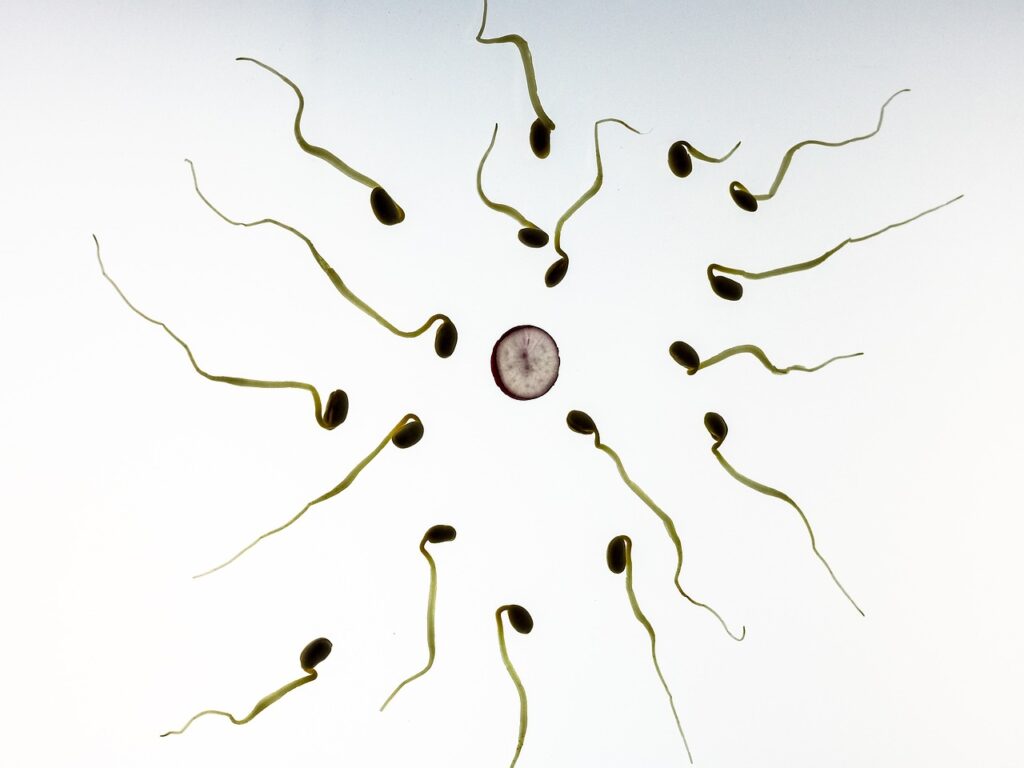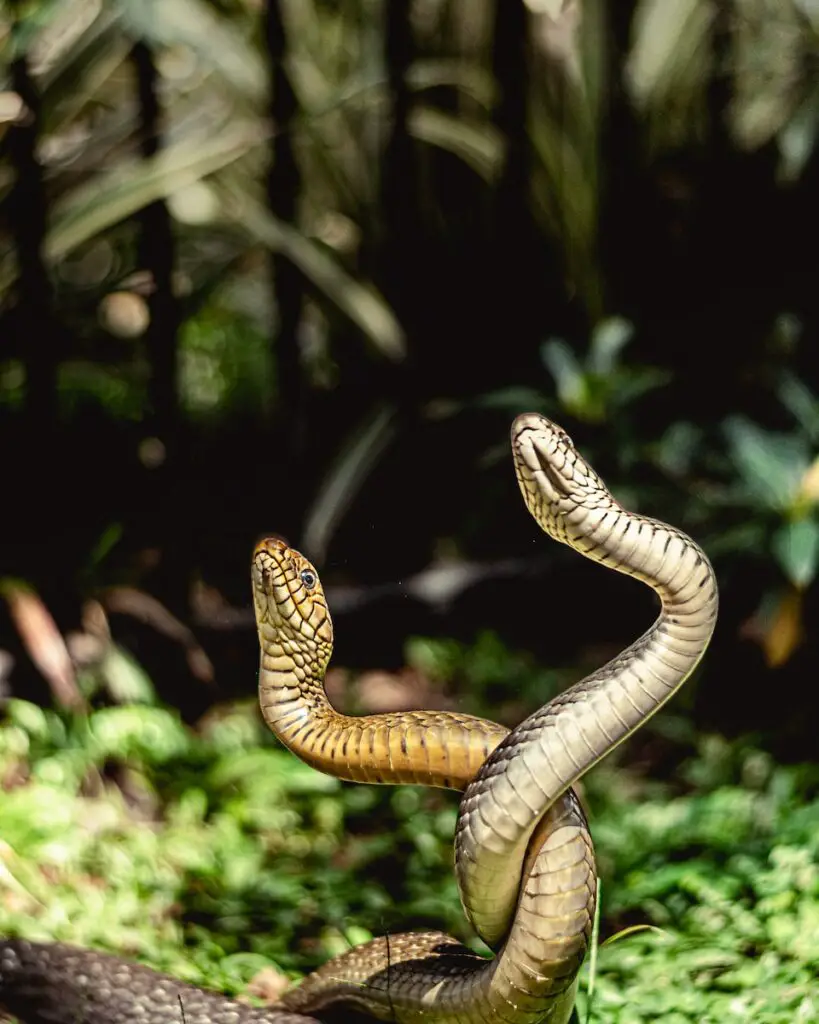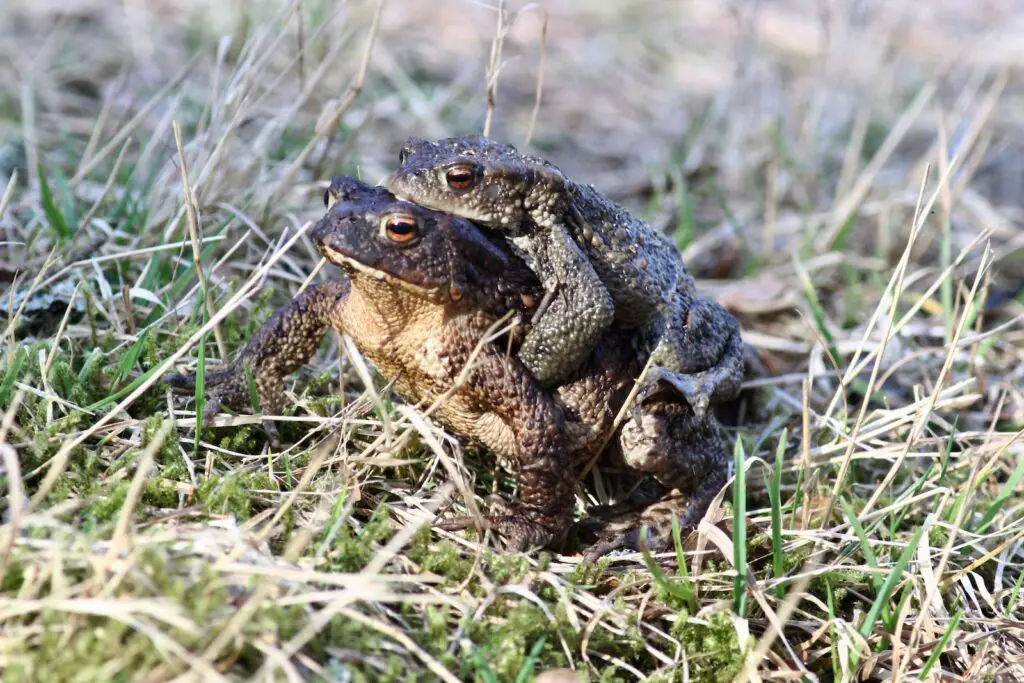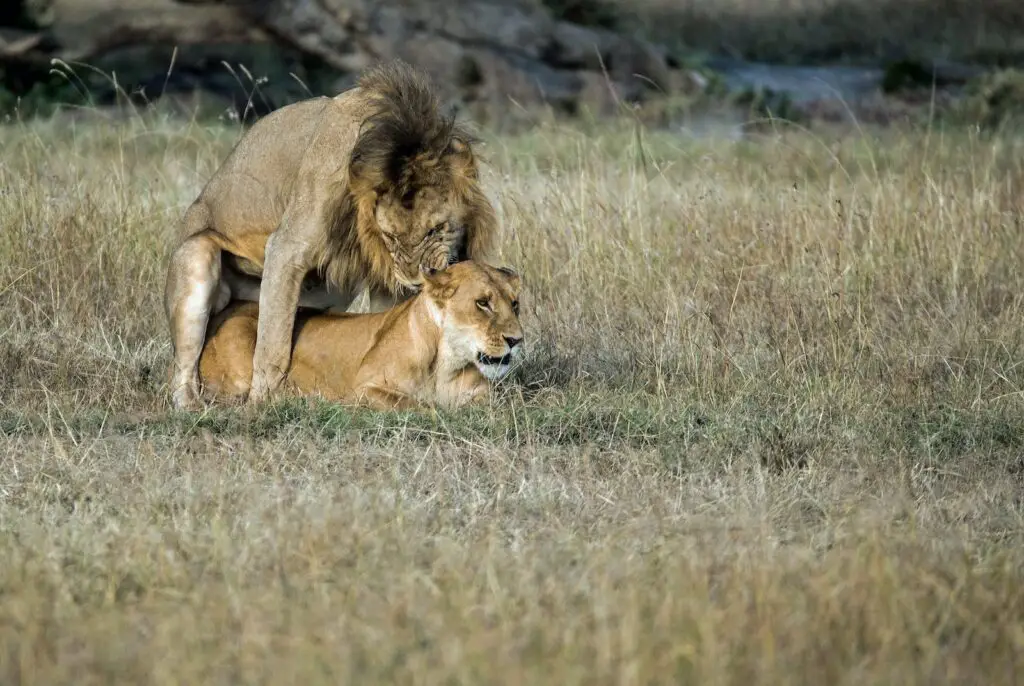Mating Vs. Sex – Is it the same or different?
Mating and sex are related concepts but refer to distinct biological processes in the context of reproduction. To elucidate the differences between these two phenomena, it is essential to provide a comprehensive and scientifically accurate explanation.
In biology, sex is the process of reproduction that involves the fusion of genetic material from two individuals of the same species, usually a male and a female. This genetic fusion produces offspring with a combination of genetic traits from both parents. Sex is characterised in many sexually reproducing species, including humans, by the formation of specialised reproductive cells known as gametes—sperm in males and eggs in females. These gametes contain half of the parent’s genetic information, and when they combine during fertilisation, a new individual with a distinct genetic makeup is produced.
Mating, on the other hand, is the behavioural and physiological process by which two people come together for sexual reproduction. It refers to a set of courtship behaviours, rituals, and interactions that culminate in copulation or the transfer of gametes between individuals. Mating behaviours differ greatly between species and may include displays, vocalisations, or physical interactions to attract and select suitable mates. Mating is the act that precedes sexual reproduction.
In conclusion, while mating and sex are closely linked in the reproductive process, they are distinct stages.
- Sex refers to the biological act of exchanging genetic material through the fusion of gametes, which results in offspring.
- Mating refers to the behaviours and interactions that occur before and during this biological process, and it serves as a means for individuals to find suitable partners for reproduction.
Understanding these distinctions is critical for understanding reproductive biology and behaviour.

Sex: The Biological Process
In biology, sex is the fundamental mechanism by which reproduction occurs, resulting in the generation of offspring with genetic diversity. This section explains the complex biological processes involved in sex, emphasising its distinction from mating.
“Sex: The Biological Process” describes the fusion of gametes, their formation through meiosis, and subsequent fertilisation, which results in genetic diversity. This biological process distinguishes sex from the behavioural and physiological aspects of mating that have been studied in the context of reproductive biology.
Reproduction through Genetic Fusion
In biology, the concept of sex is based on the remarkable phenomenon of genetic fusion reproduction. This biological process, which is essential to the survival of life on Earth, involves the joining of genetic material from two distinct individuals of the same species. This fusion of genetic material, which occurs through the union of specialised reproductive cells known as gametes, serves as the foundation for genetic diversity and evolutionary change.
Gametes: The Vehicles of Genetic Material – Gametes, the specialised haploid cells produced by individuals specifically for the purpose of sexual reproduction, are at the heart of genetic fusion reproduction. These gametes act as vehicles for the exchange of genetic information. Males produce small, motile gametes known as sperm in most sexually reproducing species, while females produce larger, non-motile gametes known as eggs or ova. Gametes are haploid, with only half the genetic information of a mature organism. This haploidy is an important aspect of sexual reproduction because it allows for genetic recombination.
Fertilization: The Unification of Genetic Material – Fertilization is a critical step in the process of genetic fusion reproduction. Fertilization is the union of two gametes, one from each parent, each with its own set of genetic information. This convergence produces a diploid zygote, which now has a complete set of genetic material, one set from each parent. This fusion of genetic material not only creates a new individual, but it also begins the genetic diversity that is characteristic of sexual reproduction.
The Significance of Genetic Diversity – The role that genetic fusion plays in evolutionary processes emphasises the significance of reproduction through genetic fusion. Natural selection operates on genetic diversity, which is generated by the combination of genetic material from two parents. It enables the emergence of individuals with novel traits, increasing a population’s adaptability to changing environmental conditions. This process can result in the evolution of new species and the survival of life on Earth over generations.
Formation of Gametes
Gametogenesis, or the formation of gametes, is a remarkable and highly specialised biological phenomenon central to sexual reproduction. This intricate process occurs within individuals’ gonads, culminating in the production of haploid gametes—sperm in males and eggs (ova) in females. Gametogenesis is a meticulously controlled sequence of events that ensures the production of these distinct cells, each containing half of the genetic information required for the formation of a new organism.
Primordial Germ Cells: The Precursors of Gametes – When primordial germ cells (PGCs) are specified early in an individual’s development, the journey of gametogenesis begins. PGCs are a distinct population of cells that are set aside during embryogenesis to produce gametes later in life. These PGCs migrate to the developing gonads in humans and serve as the first foundation for gametogenesis.
Meiosis: The Key to Haploid Gametes – Meiosis, a specialised form of cell division, is the hallmark of gametogenesis. Unlike mitosis, which produces two identical daughter cells, meiosis reduces the number of chromosomes by half, resulting in haploid cells. This process is known as spermatogenesis in males and oogenesis in females.
Spermatogenesis in Males – Spermatogenesis is a continuous process that occurs in males throughout their reproductive lives. It begins during puberty and lasts throughout adulthood. Spermatogonial cells divide in the testes’ seminiferous tubules, producing primary spermatocytes through successive rounds of mitotic division. These primary spermatocytes then undergo meiosis, producing haploid secondary spermatocytes. More meiotic divisions result in round spermatids, which mature into motile sperm cells.
Oogenesis in Females – Female oogenesis, on the other hand, begins during foetal development and ends with menopause. Females, unlike males, are born with a limited number of primary oocytes that remain in prophase I of meiosis until puberty. Each month, a small number of these primary oocytes resume meiosis, with one progressing to become a mature egg cell. The division is asymmetric, resulting in one large oocyte and smaller polar bodies that do not usually contribute to fertilisation.
Fertilization and Genetic Diversity
Fertilization stands as the pivotal moment in sexual reproduction, where the union of two specialized reproductive cells, gametes, culminates in the creation of a zygote. This process is instrumental in generating genetic diversity among offspring, a cornerstone of evolutionary biology.
At its core, fertilisation is the union of a sperm cell supplied by the male and an egg cell supplied by the female. A series of intricate molecular interactions orchestrate this union, ensuring the successful merging of genetic material from both parents. The flagellum, a whip-like tail on the sperm, propels it through a series of physiological barriers within the female reproductive tract. This mobility allows it to reach the egg, which is normally immobile after ovulation and resides in the fallopian tube.
A remarkable series of events occurs once the sperm reaches the egg. The binding of sperm to the zona pellucida, a glycoprotein matrix that surrounds the egg, is one of the most important steps. This binding causes the acrosomal reaction, in which enzymes from the sperm’s acrosome are released. These enzymes help sperm penetrate the zona pellucida, allowing them to reach the plasma membrane of the egg. The sperm and egg membranes then fuse, allowing the sperm nucleus to enter the egg cytoplasm.
The formation of a diploid zygote results from the fusion of the sperm and egg nuclei. The zygote contains two complete sets of chromosomes, one from each parent, providing the genetic foundation for the offspring’s development. Because of the random arrangement of chromosomes during meiosis and genetic recombination, the genetic material contributed by each parent is unique. As a result, each zygote carries a unique set of genetic traits, which serves as the foundation for the genetic diversity observed within populations.
Genetic diversity is essential for a species’ long-term survival. It supports organisms’ ability to adapt to changing environments and challenges, as individuals with advantageous characteristics are more likely to thrive and reproduce. In this way, fertilisation and the genetic diversity it produces are inextricably linked to the overarching processes of evolution and the survival of life on Earth.

Mating: Behavioral and Physiological Processes
Mating, a complex and multifaceted biological phenomenon, includes both behavioural and physiological processes that are critical to species survival. This section deconstructs the complexities of mating, shedding light on the behavioural and physiological aspects that culminate in the union of individuals for sexual reproduction.
Mating is characterised by a dynamic interaction of behavioural and physiological processes. Courtship behaviours aid in mate recognition and selection, and copulation and gamete transfer are the culmination of these efforts, resulting in the possibility of reproduction. The complexities of mating behaviours and physiological adaptations vary greatly between species, reflecting the fascinating tapestry of life’s reproductive success strategies.
Courtship and Behavioral Displays
Courtship, a prominent aspect of mating behaviour, is a complex series of actions and behavioural displays performed by individuals seeking to attract and select suitable mates. This complex process is critical to reproductive success in many species, facilitating mate recognition, assessment, and, ultimately, successful copulation. This section delves into the multifaceted world of courtship and the behavioural displays that accompany it.
The Significance of Courtship – Courtship behaviours have evolved as an important prelude to successful mating, serving a number of important functions. For starters, courtship allows individuals to identify and recognise potential mates within their species, which is essential for species preservation. Second, it allows individuals to assess the suitability of a prospective partner by weighing factors such as genetic fitness, health, and compatibility. Finally, courtship can synchronize individuals’ reproductive timing, ensuring that mating occurs when conditions are favourable for offspring survival.
Behavioral Displays – Behavioral displays are central components of courtship rituals, often characterized by intricate and species-specific actions that communicate information to potential mates. These displays can manifest in various forms, including visual, auditory, tactile, or chemical cues. Some notable examples include:
- Visual Displays: In many bird species, males engage in vibrant plumage displays or elaborate dances to captivate the attention of females. Peacock’s ornate tail feathers and the intricate aerial displays of birds of paradise exemplify this.
- Auditory Signals: Vocalizations play a pivotal role in courtship for numerous species, such as the melodious songs of male birds or the croaking calls of frogs. These vocalizations serve both to attract females and establish territory or dominance.
- Tactile Interactions: Insects, like butterflies and ants, often engage in tactile courtship rituals involving antennal or leg contact, which facilitates mate recognition and acceptance.
- Chemical Signaling: Pheromones, chemical substances emitted by individuals, are instrumental in the courtship of many insects and mammals. These chemical cues convey information about an individual’s reproductive status and compatibility.
Variability in Courtship Behaviors – It is critical to recognise that courtship behaviours vary greatly between species. The specific rituals and displays involved are fine-tuned to each organism’s ecological and evolutionary context. Furthermore, the success of courtship is dependent on both males and females mutual recognition and acceptance of these behaviours.
Selection of Suitable Mates
In sexually reproducing species, choosing suitable mates is a critical step in the mating process. This complex process involves a variety of mechanisms and criteria that individuals use to identify partners with desirable characteristics, ultimately contributing to the success of reproduction and the preservation of genetic diversity. This section delves into the complexities of mate selection, shedding light on its importance in reproductive biology.
Preferences and Signals – Individuals often begin mate selection by expressing preferences for specific traits in potential mates. These preferences can differ significantly between species and are influenced by a combination of genetic, environmental, and social factors. Mate preferences can be innate in some cases, such as a preference for specific physical characteristics or behaviours. In other cases, social and environmental factors play a larger role in determining mate preferences.
Courtship and Display – Many species use elaborate courtship rituals and displays to attract potential mates. These displays may include intricate dances, vocalisations, or the display of colourful plumage or physical characteristics. Individuals can use courtship behaviours to demonstrate their suitability as partners, demonstrating their genetic fitness or ability to provide resources required for successful reproduction.
Compatibility and Genetic Fitness – Mate selection is influenced not only by attraction but also by compatibility. Individuals frequently seek genetically compatible mates in order to improve the fitness of their offspring. Immune system compatibility is one example of compatibility, which can result in healthier offspring with a stronger immune response. Individuals may also evaluate potential mates for their ability to provide resources or protection, increasing the likelihood of successful reproduction and offspring survival.
Sexual Selection – Sexual selection is a concept proposed by Charles Darwin in which individuals of one sex (usually males) compete for access to mates or individuals of one sex (usually females) choose mates based on specific traits. This type of selection can result in the development of elaborate secondary sexual characteristics, such as the vibrant tail feathers of the peacock, which serve to attract mates.
Copulation and Gamete Transfer
Copulation and gamete transfer represent pivotal stages in the process of sexual reproduction. These complex and highly specialized mechanisms are essential for the successful fusion of gametes, a fundamental step that leads to the generation of offspring in sexually reproducing species.
Copulation: The Act of Union – Copulation, also known as sexual intercourse in the context of humans, is the physical act of bringing together individuals of the same species for the purpose of gamete transfer. This intimate interaction consists of a series of coordinated behaviours and physiological responses designed to facilitate the union of gametes from two distinct individuals. Copulation is preceded by elaborate courtship rituals and displays in many species, which serve as a means of mate recognition and selection. During copulation, the male and female make physical contact, allowing sperm to be transferred from the male to the female’s reproductive tract.
Gamete Transfer: The Exchange of Genetic Material – The ultimate goal of copulation is the transfer of gametes, specifically the delivery of sperm to the reproductive organs of the female. Sperm, the male gametes, transport the genetic material required for fertilisation. The female reproductive tract is designed to receive and transport sperm to the site of fertilisation, which varies depending on the species. Sperm, for example, travels through the female cervix and uterus to reach the fallopian tubes, where fertilisation typically occurs. Seminal fluids containing nutrients and enzymes may accompany sperm in some species to support viability and facilitate fertilisation. The successful transfer of gametes during copulation culminates in the fusion of the male and female gametes, resulting in fertilization. It is important to note that while copulation is a common method of gamete transfer in many animals, there are exceptions. Some species, such as many aquatic organisms, release gametes into the surrounding environment, where fertilization occurs externally.

Relationship Between Mating and Sex
Mating and sex are intimately connected, with mating acting as a behavioural and physiological precursor to the biological process of sex. Mating behaviours influence mate selection, competition, and reproductive success, thereby shaping species genetic diversity and reproductive strategies. Understanding these complex relationships is critical for understanding the diversity of reproductive strategies found in nature.
The relationship between mating and sex is a fundamental aspect of reproductive biology, one that shapes the strategies and behaviors of various species. This relationship can be explored through several key dimensions:
Mating as a Precursor to Sex
Mating, a critical stage in the reproductive process of sexually reproducing species, is a necessary precursor to the ultimate act of sex. This section delves into the multifaceted role of mating behaviour and rituals as the first step toward sexual reproduction.
Courtship Rituals and Behaviors – Mating begins with courtship, a series of rituals and behaviors that serve as an intricate dance between potential mates. These rituals often involve the display of physical attributes, vocalizations, or specific movements, all aimed at attracting and signaling readiness for mating. Courtship behaviors are highly species-specific and finely tuned to ensure the recognition of conspecifics, or individuals of the same species, and to facilitate mate selection.
Recognition and Pair Formation – One of the primary functions of mating behaviors is to enable individuals to recognize and select suitable mates. Through courtship, individuals assess the health, genetic fitness, and compatibility of potential partners. In some species, the choice of a mate is primarily driven by the females, who evaluate the quality of male displays or offerings. In others, both sexes may engage in elaborate courtship displays, contributing to mutual mate selection.
Copulation: The Climax of Mating – The pinnacle of mating behavior is copulation, where physical contact and the exchange of gametes occur. This phase marks the transition from the behavioral and physiological preparations of mating to the biological process of sex. Copulation varies widely across species in terms of duration, frequency, and post-copulatory behaviors. Its role is to ensure the transfer of male gametes (sperm) to the female’s reproductive tract, where fertilization can subsequently take place.
Reproductive Success and Genetic Diversity – Mating behaviors are central to reproductive success and the perpetuation of species. The choices made during mating impact the genetic diversity of offspring. Mate selection may favor individuals with specific traits, promoting the inheritance of advantageous genetic material. Furthermore, mating behaviors can influence the dynamics of sexual selection, shaping the evolution of secondary sexual characteristics and reproductive strategies.
The Role of Mating Behavior in Reproduction
The role of mating behaviour in reproduction is an important aspect of various species’ reproductive strategies. Mating behaviour refers to a variety of actions, rituals, and interactions used to attract, select, and successfully pair individuals for the purpose of reproduction. This section delves into the importance of mating behaviour in reproductive biology.
Mate Selection – Mating behaviour is critical to the mate selection process. Individuals within a species frequently exhibit traits and behaviours that are appealing to potential mates. These characteristics can vary greatly and can include physical characteristics like vibrant plumage or elaborate courtship displays, as well as behavioural characteristics like singing or dancing. Assortative mating is the selection of a mate based on these traits, and it is crucial in determining the genetic diversity of offspring.
Competition and Mate Acquisition – Males in many species compete for access to females. This competition can take many forms, including physical combat, strength displays, and elaborate performances. The outcome of such competition can have a significant impact on a person’s reproductive success. Females, on the other hand, may judge potential mates based on their actions and displays. This selective process, known as intersexual selection, can result in a preference for specific traits that improve an individual’s reproductive success.
Courtship Rituals – Courtship rituals are a subset of mating behaviour that consists of a series of actions and behaviours aimed at attracting and securing a mate. These rituals can be extremely elaborate, involving intricate dances, vocalisations, and the exchange of gifts or offerings. Courtship rituals not only aid in mate recognition but also serve to evaluate potential partners’ suitability. Courtship rituals must be completed successfully in some species before mating.
Ensuring Reproductive Success – The ultimate goal of mating behaviour is to ensure reproductive success. Individuals increase their chances of finding suitable mates by engaging in specific mating behaviours, increasing the likelihood of successful fertilisation and offspring production. Mate selection traits and behaviours are frequently linked to the fitness and genetic quality of the individuals involved.
Variations in Mating and Sex Across Species
The remarkable diversity of reproductive strategies and mechanisms characterises the intricate tapestry of life on Earth. Variations in mating and sex behaviours across species reflect organisms’ adaptation to their specific ecological niches and the survival and reproduction imperatives. This section delves into some of the most important differences in mating and sex found in the animal kingdom.
Monogamy vs. Polygamy – The choice between monogamy and polygamy is one of the most noticeable differences in mating behaviour. Monogamous species form exclusive pairs, with one male and one female mating and frequently raising offspring. This strategy has been observed in species such as birds, where cooperation in raising young improves survival. Polygamous species, on the other hand, have multiple mating patterns, with one individual, usually a male, mating with multiple partners. Elephant seals and many insects exhibit polygamous mating, in which males compete fiercely for access to females.
Hermaphroditism and Simultaneous vs. Sequential Mating –Another intriguing variation is hermaphroditism, which is the presence of both male and female reproductive organs in a single individual. Some hermaphroditic species engage in simultaneous mating, in which two individuals exchange gametes at the same time, allowing for cross-fertilization. Others engage in sequential hermaphroditism, switching between male and female roles at various stages of life. Certain fish, for example, may begin as males and later transform into females to optimise reproductive success in response to environmental or social factors.
Courtship Rituals and Displays – Courtship rituals and displays vary significantly. To attract mates, some species perform intricate dances, vocalisations, or colourful displays. Peacocks display their vibrant plumage, whereas birds such as the bowerbird build elaborate nests and decorate them to impress potential mates. In contrast, some species, such as many marine invertebrates, use chemical cues to signal mating readiness.
Modes of Gamete Transfer – The mechanisms of gamete transfer differ greatly between species. While many animals copulate, some aquatic organisms use external fertilisation by releasing gametes into the surrounding water. Internal fertilisation, on the other hand, is a common strategy among terrestrial species such as mammals and reptiles. To facilitate these distinct modes of gamete transfer, various adaptations in genital structures and reproductive organs have evolved.
Lekking and Cooperative Mating Systems – Males in certain species congregate in specific areas known as leks to display and compete for female access. Lekking behaviour has been observed in sage grouse and some antelope species. Multiple individuals work together to care for young or defend territories in cooperative mating systems, which are found in species such as African wild dogs and some social insects.

CONCLUSION
The study of mating versus sex reveals that, while these terms are related in the context of reproductive biology, they represent distinct yet complementary aspects of the reproductive process.
Sex, as a biological process, is defined by the fusion of gametes, which results in the generation of genetically diverse offspring. It includes the formation and transfer of specialised reproductive cells, such as sperm and eggs, as well as fertilisation, which results in the generation of new life. Sex is a universal phenomenon in sexually reproducing species, highlighting its critical role in genetic diversity and evolutionary processes.
In contrast, mating is the behavioural and physiological precursor to sex. It consists of a variety of courtship rituals, displays, and interactions that facilitate mate recognition, selection, and the eventual union of individuals for sexual reproduction. Mating behaviours differ greatly between species, reflecting adaptations to ecological niches and social structures.
Mating and sex have an intimate and intertwined relationship. Mating behaviours help individuals find suitable partners for the critical act of sexual reproduction. Mate selection, competition, and courtship rituals all contribute to sexual reproduction success.
In conclusion, while mating and sex are separate concepts, they are inextricably linked in the grand tapestry of life’s reproductive strategies. Mating sets the stage for the biological process of sex, bringing together compatible individuals for the necessary exchange of genetic material. Understanding these concepts is essential not only for biological research but also for appreciating the diversity and complexity of life’s reproductive mechanisms.
